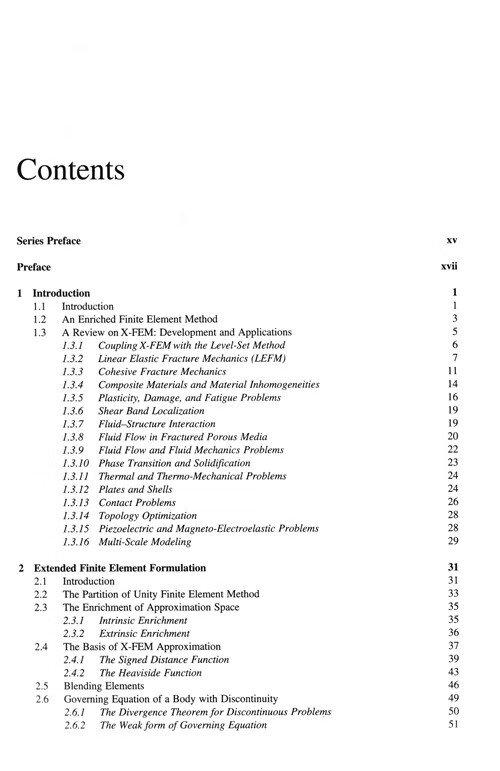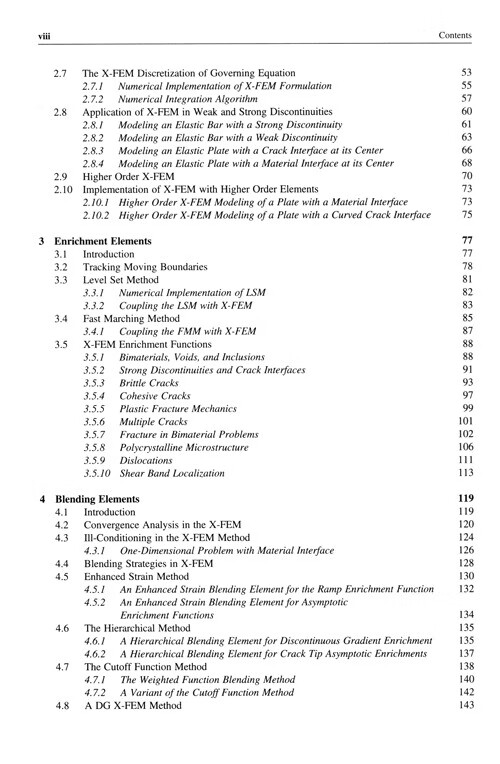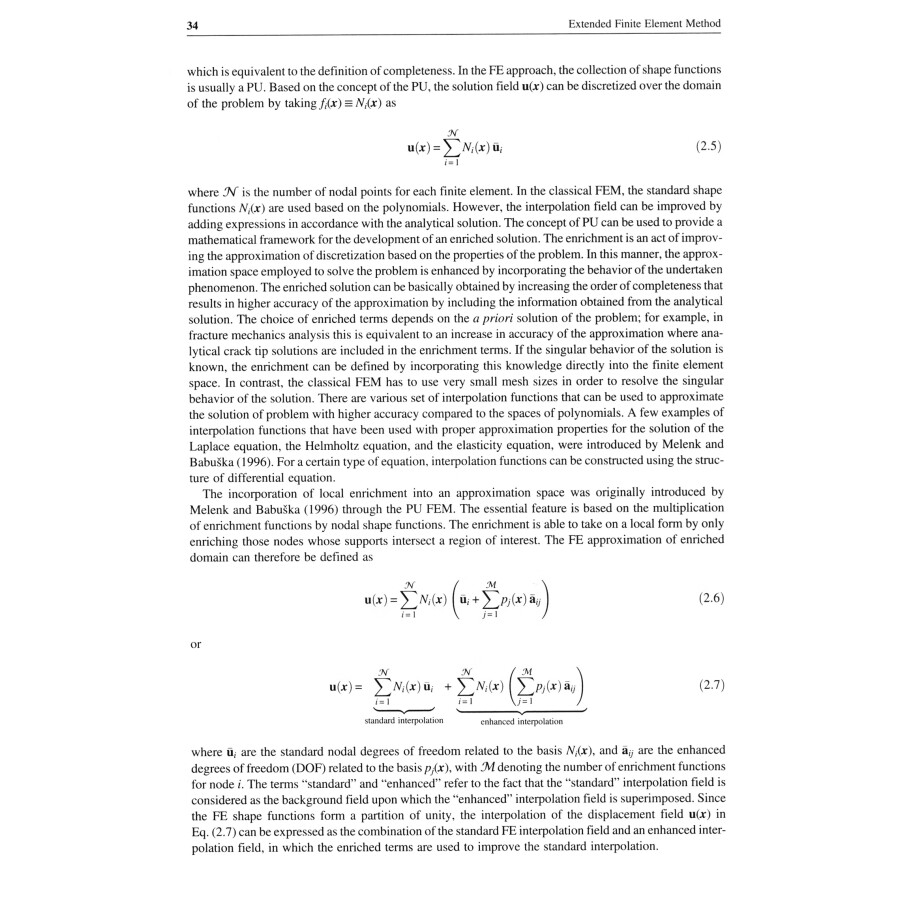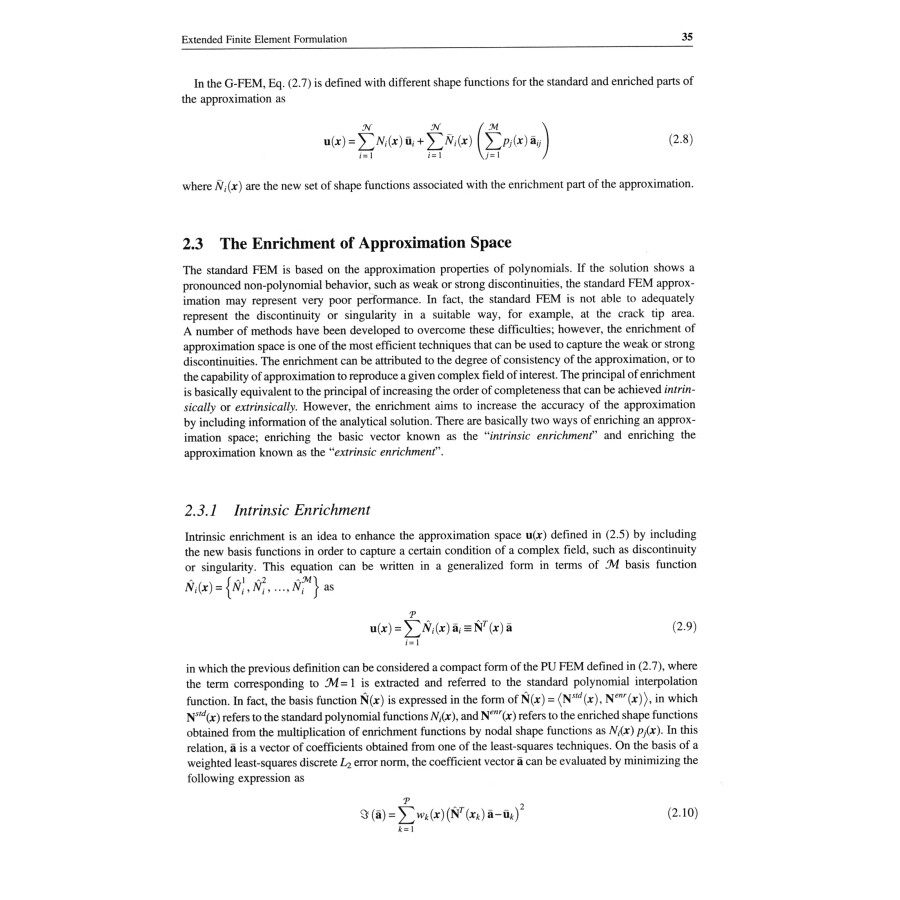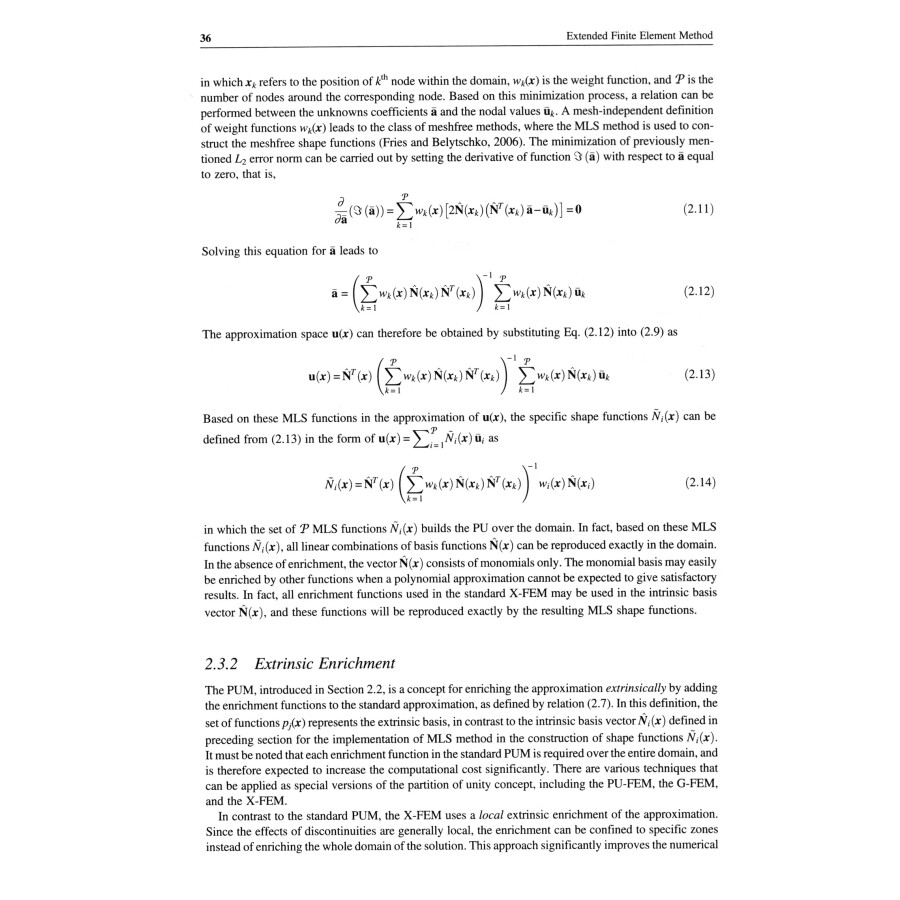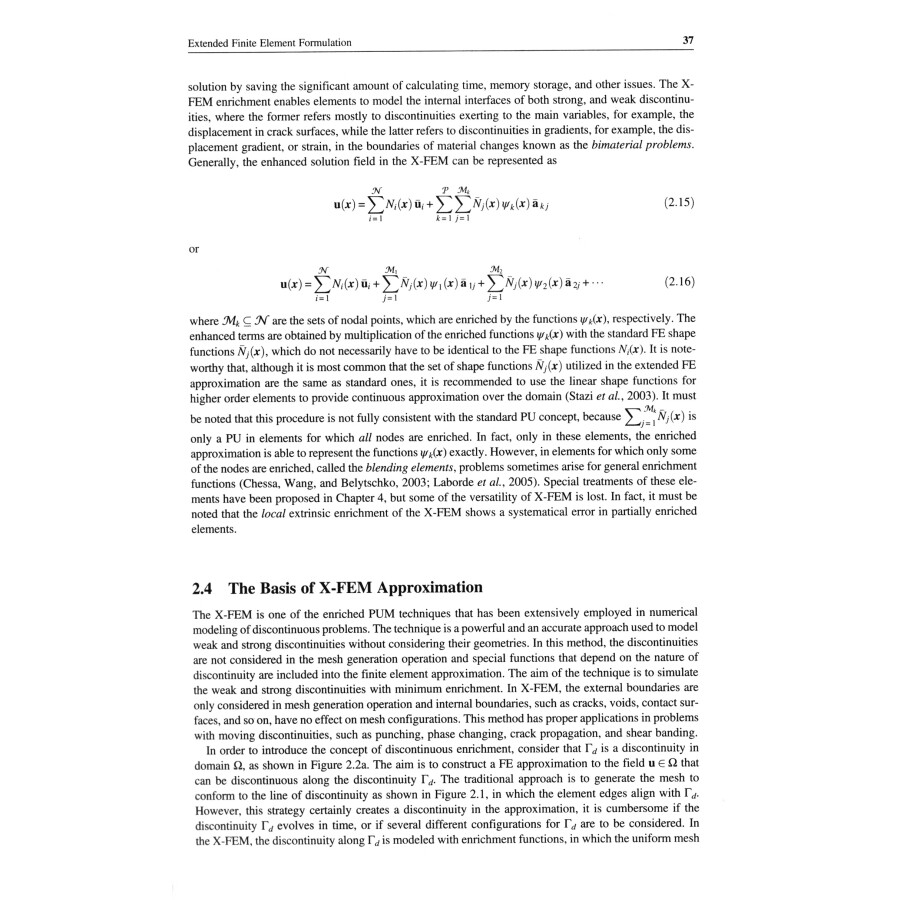Details
The book begins with an overview of the extended finite element method in Chapter 1, in which an emphasis is given on various applications of the technique in materials modeling problems. The mathemat ical formulation of the X-FEM is presented in Chapter 2 with special reference to solid mechanics problems.
It includes the introduction of partition of unity method, enrichment functions, blending elements, the X-FEM discretization, and the numerical integration of X-FEM formulation. In this chapter, numerical implementation is presented for the linear and higher order quadrilateral elements in X-FEM modeling of linear and curved interfaces. Chapter 3 presents an overview of various X-FEM enrichment functions used in a wide variety of problems, such as bimaterials, cracks, dislocations, fluid-structure interactions, shear bands, convection-diffusion, thermo-mechanical, deformable porous media, piezoelectric, magneto-electro-elastic, topology optimization, rigid particles in Stokes flow, solidification, and so on.
In Chapter 4, the problems of convergence rate and condition number within the X-FEM are discussed, and various remedies that are available in the literature are introduced for these issues. In Chapter 5, the X-FEM is developed for nonlinear behavior of materials in large deformations; it is first presented in
the framework of a Lagrangian large plasticity deformation formulation, and is then described in the framework of an arbitrary Lagrangian-Eulerian method. In Chapter 6, the X-FEM method is presented for modeling frictional contact problems on the basis of the penalty method, Lagrange multipliers technique, and augmented Lagrange multipliers approach.
The implementation of X-FEM technique in linear elastic fracture mechanics is presented in Chapter 7.The basis of linear elastic fracture mechanics is first introduced by defining the stress and displacement distributions around the crack tip and the stress intensity factors for different loading modes. The governing equation of a cracked body is then derived in the framework of an X-FEM. In Chapter 8, the X-FEM technique is utilized to simulate a cracked body combined with the cohesive crack model. Various cohesive crack growths are demonstrated in the framework of extended-FEM technique based on the stress criterion, the stress intensity factor criterion, and the cohesive segments method. In Chapter 9, the X-FEM technique is presented for crack growth simulation in ductile fracture problems. A non-local damage-plasticity model is employed to capture the fracture process zone within the X-FEM technique.The Lagrangian X-FEM formulation is utilized to model large deformation crack propagation and, the process of failure and crack propagation in dynamic and cyclic loading conditions is performed using dynamic large deformation X-FEM formulation. In Chapter 10, the X-FEM is developed to model the deformable porous media with weak and strong discontinuities. The fluid phase mass balance equation is applied together with the momentum balance of bulk and fluid phases to model hydraulic fracture propagation in porous media on the basis of a u-p X-FEM formulation. In Chapter 11, the X-FEM is proposed for the fully coupled hydro-mechanical analysis of deformable, progressively fracturing porous media interacting with the flow of two immiscible, compressible wetting and non-wetting pore fluids. The fluid flow within the crack is simulated using Darcy's Law in which the permeability variation with porosity due to the cracking of the solid skeleton is accounted. The cohesive crack model is integrated into the numerical modeling, in which the nonlinear fracture processes occurring along the fracture process zone are simulated. Finally, Chapter 12 is devoted to the implementation of the X-FEM technique in thermo-hydro-mechanical modeling of saturated porous media. The thermo-hydro-mechanical governing equations are derived by utilizing the momentum equilibrium equation, mass balance equation, and the energy conservation relation within the X-FEM framework.
Table of Contents
